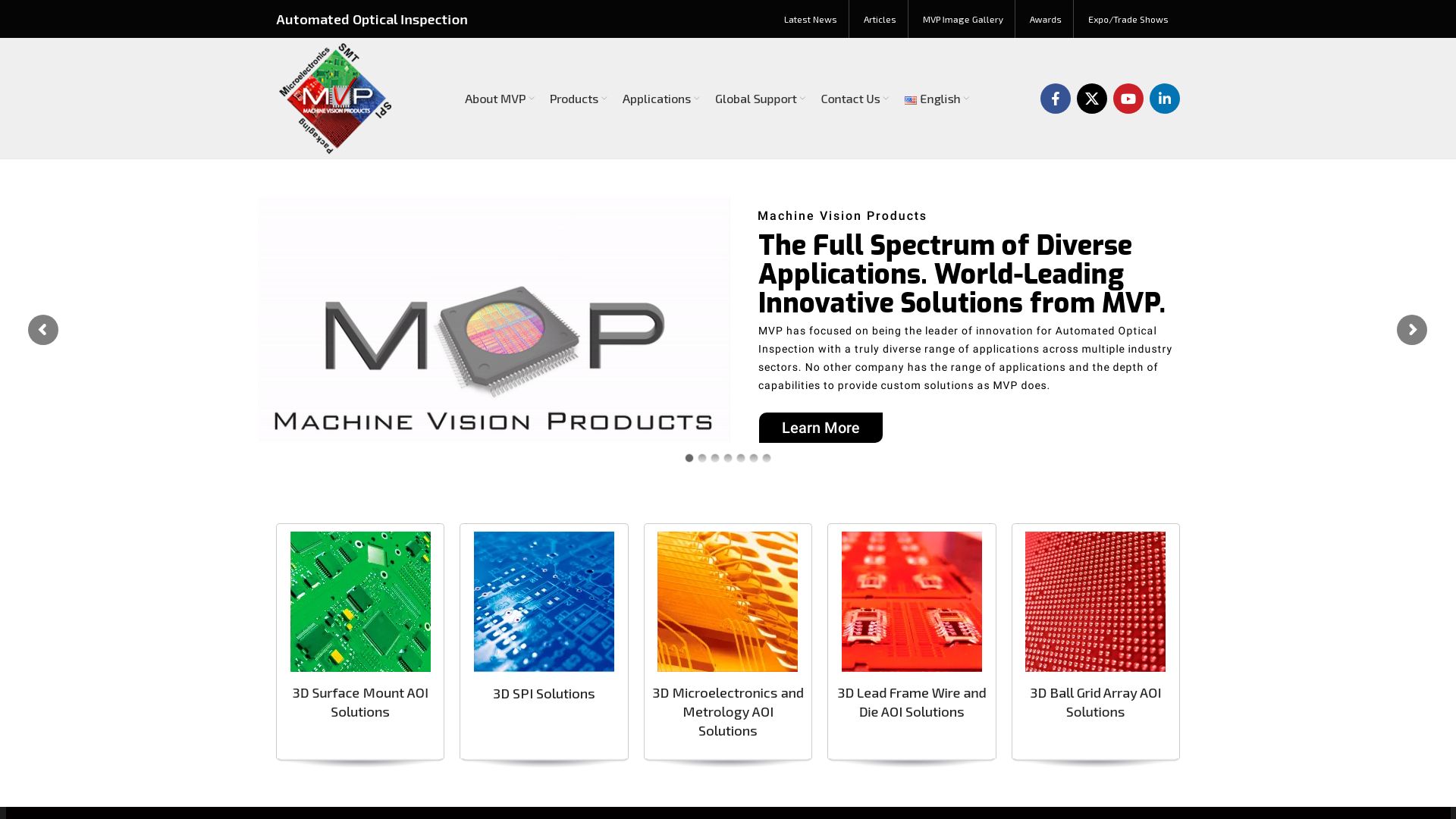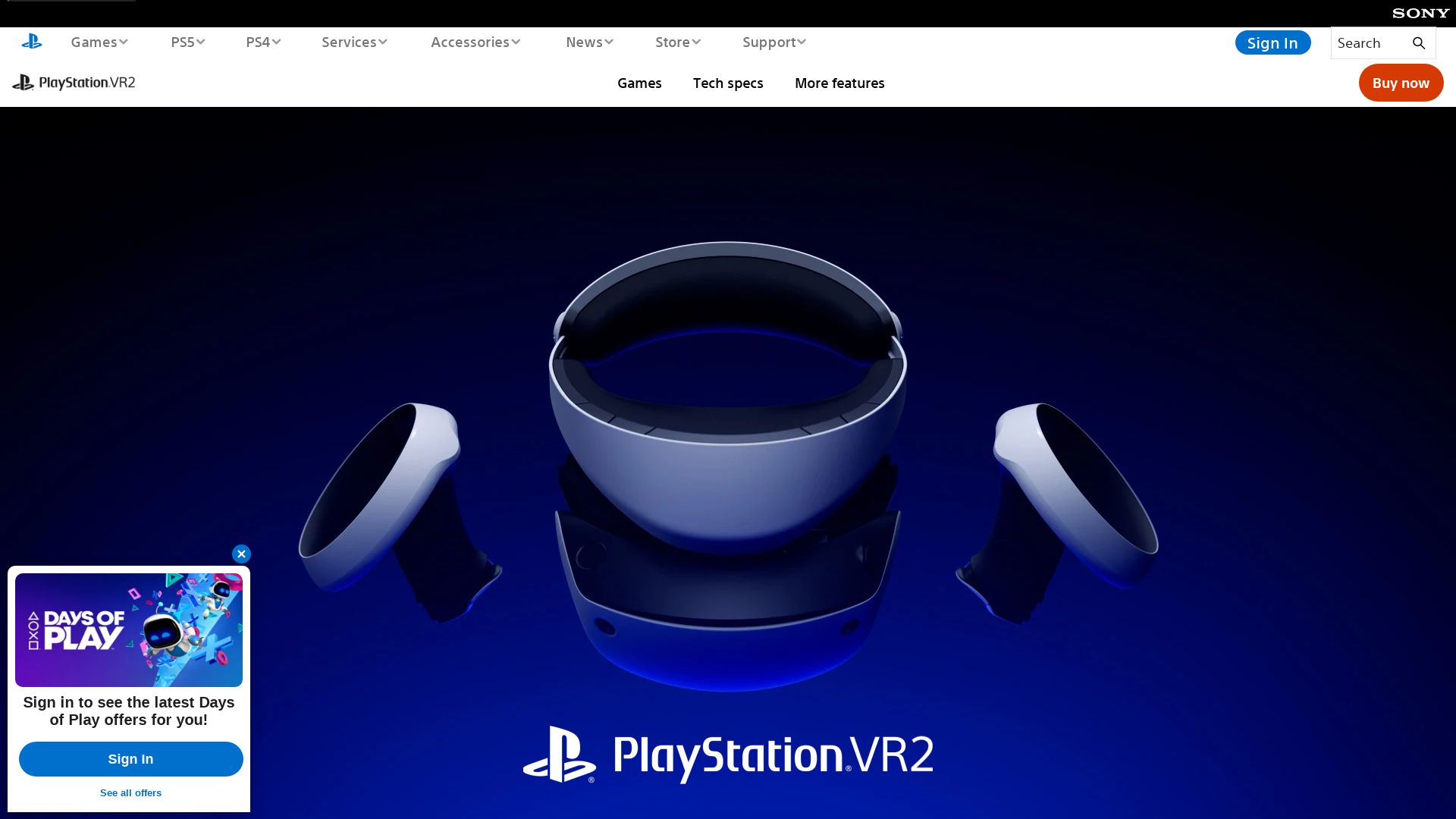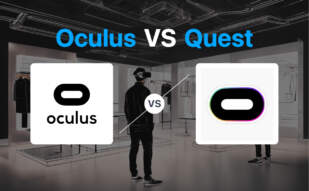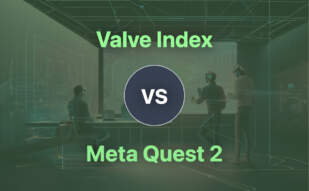Quest 1 is the fourth consumer VR headset from Oculus, offering standalone design with dual hand controllers and four wide-angle tracking cameras. It maintains the original Rift’s aesthetic, equipped with a Qualcomm Snapdragon 835 mobile chipset and storage options of 64GB or 128GB. The headset provides a slider for adjusting lens distance and operates wirelessly for an immersive experience.

For those exploring other VR headset options, consider Quest 2, Quest 3, Quest Pro, Rift S, Valve Index, Index, Vision Pro, PSVR 2, Reverb G2, and more.
Quest 2
The Quest 2, originally launched as Oculus Quest 2, is a revered VR headset developed by Reality Labs, a division of Meta Platforms. Having shifted away from a PC-based VR strategy, it’s a standalone device with robust internal OS capacity.
Quest 2 Top|Best Features
- Qualcomm SnapDragon XR2 Processor: Providing a notable performance boost compared to its predecessor.
- High Resolution Display: An RGB LCD with 1832 x 1920 per eye offering a brilliant visual interface.
- 6DOF Inside-Out Tracking: Via four in-built cameras and two controllers, enabling intuitive movement and interaction.
- VR Store: Has an associated Quest Store, offering dozens of VR games and experiences.
- Versatility: Can operate standalone or with Oculus Rift-compatible VR software running on a desktop computer.
| Feature | Details |
|---|---|
| Refresh Rate | Boosted from the original 72Hz to 120Hz, this improves graphic fluidity. |
| Memory | Offers choice with variations of 64GB, 128GB, and 256GB available. |
| Sound | Equipped with 2 built-in speakers and a 3.5mm headphone jack, ensuring an immersive audio experience. |
Quest 2 Limitations
- Short Battery Life: The Quest 2’s battery lasts approximately 2-3 hours between charges.
- No Room for Expansion: Despite increasing the original storage to 128GB, there’s no option for further expansion.
- Age Restriction: Supported by Meta accounts, it’s available to users aged 10 and above.
Quest 2 Pricing
The Quest 2 provides value for money, costing $299 for 64GB and $399 for 256GB.
Quest 2 Use Cases
Use case 1: Gaming
A perfect tool for gaming enthusiasts, with its high-resolution display and increased refresh rate, Quest 2 provides an immersive gaming experience.
Use case 2: Training and Simulation
Exact specifics and detailed visuals accompanied by 6DOF inside-out tracking make Quest 2 an optimal choice for training and simulation purposes.
Use case 3: Virtual Meetings and Collaboration
The lightweight design and Wi-Fi 6 connectivity make it a valuable tool for virtual workspaces where remote collaboration is required.
Quest 3
The Meta Quest 3 steps into the future as the world’s first mass-market mixed reality headset. This immersive innovation, slated for release on October 10, 2023, promises to revolutionize not just the way we experience digital realms, but also how we interact with the physical world.
Quest 3 Top Features
- Mixed reality capabilities: Offers seamless blending of reality and virtuality for groundbreaking new experiences.
- High-Resolution Display: 4K+ Infinite Display, a 30% increase in resolution compared to its predecessor, the Quest 2, providing an immersive experience.
- Advanced Audio: Offers improved sound clarity and bass performance with a 40% louder audio range.
- Better Performance: Powered by the Snapdragon XR2 Gen 2 platform developed with Qualcomm, doubling the graphic processing power of Quest 2.
- New Controllers: Updated controllers offer more robust interactivity for better gaming and application usage.
| Comfort meets customization: | With a redesigned, thinner profile and soft adjustable strap design, the device ensures a comfortable fit. |
| Automatic guardian system: | New depth sensor and updated cameras create a fail-safe against collision, utilizing newly generated “spatial data”. |
| Shared spatial anchors: | These enable local multiplayer, offering interactive experiences with overlays on the physical environment. |
Quest 3 Downsides
- Price: It’s a significant investment, particularly for the larger capacity model.
Quest 3 Pricing
The Quest 3 is available in two models: the 128GB variant is priced at $499.99 USD, while the high-capacity 512GB model is priced at $649.99 USD.
Quest 3 Use Cases
Use case 1 – Augmented Reality Games
The powered-up Quest 3 can transform traditional board games like Demeo into high-stakes holographic adventures right on your living room floor.
Use case 2 – Fitness Training
With the introduction of Xponential+ the Quest 3 allows users to engage in immersive, effective, and engaging fitness training.
Use case 3 – Sports Viewing
Partnering with Xtadium, Quest 3 offers a revolutionary new way to watch and experience sports, virtually transporting you into the stadium.
Quest Pro
The Quest Pro is a sophisticated VR/AR headset, designed exclusively for enterprise users with specific VR/AR requirements. Reflecting its professional subject, it boasts a slick, black, glossy front panel and promises seamless workflows integration.
Quest Pro Top Features
- Five cameras: With 3 front-facing and 2 side-facing cameras, your VR/AR views are enhanced.
- Charging cradle: Comes with USB-C port, cable, and wall adapter; includes recesses to charge the headset and controllers.
- Reimagined motion controllers: These are lighter, less cumbersome and outfitted with rechargeable batteries.
- Proprietary specs: The headset utilizes a Snapdragon XR2+ processor, which is 50% more potent than the one in Quest 2, plus 12GB RAM and 256GB storage.
| Design | Sleek, black, glossy front panel for a professional look |
| Resolution | 1,920 x 1,800 pixels per eye, with a local dimming backlight system |
| Software | Meta Horizon Worlds with customized interfaces for collaborative work |
Quest Pro Downsides
- Unpadded Headset: Might be uncomforting as it presses against the face.
- Limited Consumer Applications: The advanced specifications of Quest Pro aren’t fully utilized by consumer-focused software.
- High Price Tag: The cost is considerably higher than the standard Meta Quest 2.
Quest Pro Pricing
The Quest Pro headset is currently priced at $1499.99, a figure that reflects its professional standing and sophisticated features. This price is approximately three times that of the Meta Quest 2.
Quest Pro Use Cases
Use Case 1: VR/AR Intensive Workflows
Quest Pro is ideal for enterprise users who require advanced VR/AR capabilities. Given its high performance and integration with Meta Horizon Worlds, it provides effective collaboration and results.
Use Case 2: Advanced gaming
For game developers and enthusiasts seeking a more immersive gameplay experience, Quest Pro’s beefed-up specs, snapdragon XR2+ processor and superior graphics deliver a superlative gaming experience.
Use Case 3: Professional training
Quest Pro proves especially beneficial for professionals looking to implement VR into training or simulations, thanks to its high processing power and professional design.
Rift S
The Rift S, developed by Facebook Technologies and Lenovo as a successor to the original Oculus Rift, launched in March 2019, offers a higher resolution display and improved tracking with the Oculus Insight system. However, production ceased in June 2021.
Rift S Top Features
- Improved ‘inside-out’ positional tracking system thanks to Oculus Insight technology.
- Next-generation lens technology with a 115° field of view and reduced god rays.
- Sharp display of 2560×1440 (1280×1440 per eye) at an 80Hz refresh rate.
- Comfort optimization with Lenovo-designed halo headband.
- Compatible with Oculus Store, Viveport store, and Steam VR for easy access to games & VR content.
- Redefines safety with the Passthrough+ feature.
| Feature | Description |
|---|---|
| Tracking cameras | 5 built-in cameras for precise room-scale tracking. |
| Audio Integration | Integrated speakers and a 3.5mm Stereo headphone jack. |
| Tether cable and Weight | Includes a 5m tether cable. Weighs only 1.1 lb without cable. |
Rift S Disadvantages
- Some criticism for being only an incremental upgrade over the original Oculus Rift.
- Adjustable IPD only possible via software as it uses a single screen.
- Ceased production, potentially affecting support and availability.
Rift S Pricing
Originally retailed at $399.
Rift S Use Cases
Use Case 1: Gaming
The Oculus Store compatibility and Insight tracking system make the Rift S an excellent choice for immersive gaming.
Use Case 2: Simulation
With its high-resolution LCD screen and 115° field of view, the Rift S can be an effective tool for training and simulation applications.
Use Case 3: VR Content Exploration
For users keen on exploring VR content, the Rift S, with compatibility with the Viveport and Steam VR stores, opens up a world of VR experiences.
Valve Index

The Valve Index is a second-generation virtual reality headset, wholly conceived, developed, and manufactured by Valve. Launched on June 28, 2019, this cutting-edge VR tech made impressive initial in-roads in the market, selling 149,000 units in its debut year.
Valve Index Top Features
- Dual 1440 x 1600 RGB LCDs boasting 50% more subpixels than OLED.
- Reduced illumination period between 0.33ms to 0.53ms for clarity in motion.
- Multiple frame rates – 80/90/120/144Hz, for extended optical comfort.
- Enhanced Field of View (FOV) with adjustable optics for user customization.
- Off-ear audio solution for better comfort and sound diversity.
- Extensive ergonomic adjustability for optimal user-comfort.
- Powerful SteamVR 2.0 sensors, guaranteeing impeccable tracking.
| Connections | 5m Tether, 1m Breakaway Trident Connector, USB 3.0, DisplayPort 1.2, 12V Power |
| Controllers | with 87 built-in sensors for hand and finger positions, joystick, touchpad, two face buttons, a menu button, and a trigger |
| External Integration | Works seamlessly with Steam, for access to vast game libraries. |
Valve Index Downsides
- Notably high cost.
- Absence of eye-tracking capabilities.
- Complicated room-scale sensor setup.
- Controllers might be superfluous for certain game types.
Valve Index Pricing
Initially priced at $999, the Valve Index now comes at $799 for the headset alone, while the full kit still holds the $999 tag.
Use Cases
Use case 1
With its adjustable optics and ergonomics, the Valve Index is an ideal choice for users expecting tailored VR experiences and high levels of comfort for prolonged sessions.
Use case 2
Given that it supports both SteamVR 1.0 and 2.0, the headset can prove advantageous to enthusiasts familiar with HTC Vive and Vive pro controllers.
Use case 3
For tech and gaming enthusiasts, the Valve Index offers advanced controls with 87 sensors on controllers for a granular gaming experience.
Index
As a critical tool highlighting the popularity of programming languages, Index prepares us for the gameboard of the tech industry. Its initial stance revealed a close race in October 2023 where C# was trailing Java by a mere 1.2%.
This rapid shift indicates the likely supremacy of C# over Java within a span of 2 short months.
Index Top Features
- TIOBE Index: Depicts the popularity of various programming languages.
- C# Trend: Reveals the annual gain of 3.29% for C#, hailing it as a major competitor.
- Java Trend: Shows the declining chart of Java, falling behind by -3.92% annually.
- Web Dev Course: A comprehensive coverage of need-to-know aspects for beginners in web development.
- Clustering: Grouping similar pages together, allowing effective and representative search result display.
| Microsoft’s Web Dev for Beginners | 12-week course with extensive learning materials. |
| Kotlin’s Ease of Use | An easy and free alternative to Java causing Java’s decline. |
| Canonical Pages | Representative pages selected by Google for display in search results. |
Index Disadvantages
- Java Decline: Oracle’s introduction of a paid Java 8 license contributing to its downfall.
- Indexing Issues: Factors like low-quality content, robots meta rules, and challenging website designs.
Index Pricing
While the Index tool itself does not mention a specific pricing, we observe a monetary shift from C# transitioning from commercial to a free and open-source platform.
Index Use Cases
Use case 1
For web development beginners, Index elucidates industry trends and offers comprehensive guidance.
Use case 2
For Search Engine Optimizers, Index helps identify and rectify SEO issues and boost website ranking.
Use case 3
For programming enthusiasts, Index emphasizes the rise and importance of open-source languages like C#.
Vision Pro

Unveiling Vision Pro, an exceptional alternative to Quest 1, a spatial computer that morphs digital content seamlessly into your physical space. Born out of an Apple vision for the future, this device is ruled by your voice, eyes, and hands, eliminating the need for controllers.
Vision Pro Best Features
- Employs a 3D camera to capture spatial photos and videos.
- Wielding 23 million pixel micro-OLED displays for better than 4K visual experience.
- Features atomized workspace, enabling apps to be scaled to hip-pocket size.
- Immersive Spatial Audio sesquipedality that simulates real-world auditory experiences.
- Equipped with Precise Eye Tracking, making controllers redundant in navigating the device.
- Pioneering Apple’s first spatial operating system, visionOS.
| Feature | Benefit |
|---|---|
| Dual-chip processor | Enables complex 3D experiences |
| Virtual avatars | Simulates lifelike interactions |
| Optic ID security system | Offers unique iris recognition for protection |
Vision Pro Limitations
- Users may encounter convenience issues due to the external battery and the dangling cable that comes with it.
- Despite its obvious advancements, Vision Pro has a high-end price tag that might not suit all consumers.
Vision Pro Pricing
Firstly, you need to be braced for a relatively high expenditure. Vision Pro is pegged at $3,499. A cheaper version with fewer cameras and sensors, no M-series chip, and no Eyesight is priced between $1,500 and $2,500. It uses Apple’s A-series chips.
Vision Pro Use Cases
Use case 1: Business Collaboration and Connectivity
The Vision Pro’s ability to transform any space into a personal theater, coupled with the spatial operating system, visionOS, supports efficient collaboration and connectivity. This functionality is enhanced by immersive AR/VR experiences.
Use case 2: Entertainment
With capabilities such as transforming any space into a personal theater and spatial audio that mimics real-world experiences, Vision Pro serves as a top-notch entertainment device.
Use case 3: Content Creation
For content creators, Vision Pro offers an ingenious way of capturing 3D photos and videos with its twelve cameras and six microphones. Simulating real interactions is effortless with the device’s virtual avatars.
PSVR 2

Behold, the PSVR 2. Outstripping its predecessor with a host of impressive features, it stands as a solid contender in the VR industry. The catch? Brace yourself for a hefty price tag and a mandatory PS5.
PSVR 2 Top Features
- Major enhancement over PSVR 1
- No more fumbling with separate camera and processor boxes. Connect directly with PlayStation 5.
- Say hello to superior Sense controllers, replacing older Move controllers.
- Tracks eye movements to provide immersive gameplay.
- Impressive specs: 2,000 x 2,040 display per eye versus original PSVR’s 960 x 1,080.
- The booster performance, even surpasses Meta Quest 2.
- Supports HDR for vibrant visuals.
| Comfort Level | Resolution |
|---|---|
| High comfort thanks to movable lens module and sturdy headband. | Dazzling 2000 x 2040 per eye for immersive experiences. |
| Bootstrap your senses with included earbuds | Wide 110-degree field of view |
PSVR 2 Downsides
- Limited game availability; sadly, it’s not backward compatible with previous PSVR titles.
- Batteries tend to run out quickly due to the high-performance nature.
- Non-upgraded PSVR1 games incompatible.
- High price; even higher than the console itself!
PSVR 2 Pricing
With a price tag of $549.99 /£529.99, PSVR 2 is a pricey prospect—one that might break the bank for some.
PSVR 2 Use Cases
Use case 1
PSVR 2 is a godsend for VR aficionados. While the limited game availability might be a deal breaker for those dedicated to PSVR 1 titles, PSVR 2 offers a slew of exclusive and fan-favorite VR titles, albeit a smaller pool compared to Steam or Meta.
Use case 2
For the tech-obsessed, this device delivers 4K visuals and engaging haptic feedback. Despite its need for PS5, it incorporates robust Sense controllers and in-headset eye-tracking for hyperrealistic VR experiences.
Use case 3
Comfort wins! For those who prioritize comfort, PSVR 2 scores high with its adjustable lenses and lightweight, ergonomic controllers—not to mention a dedicated pass-through button for a seamless VR experience.
Reverb G2
Introducing Reverb G2, an impressive offering from HP for Microsoft’s Windows Mixed Reality platform, with upgrades to comfort and motion tracking from its 2019 original.
Reverb G2 Top Features
- Facemask: Lined with memory foam and washable for comfort and cleanliness.
- Cameras: External cameras for motion tracking without need for sensors or beacons.
- Resolution: Offers 2160 by 2160 pixels per eye at a 90Hz refresh rate.
- Controllers: Two advanced motion controllers included for immersive interaction.
- Compatibility: Compatible with SteamVR and windows mixed reality.
| Feature | Description |
|---|---|
| Adjustment | Visor slider for pupillary distance adjustment. |
| Adapters | Included DisplayPort-to-mini-DisplayPort and USB-C-to-USB-A adapters for connectivity. |
| Game Compatibility | Suitable for several games like Aim Lab VR, Nvidia VR Funhouse, Project CARS Pagani Edition and VRChat. |
Reverb G2 Disadvantages
- Camera tracking: Occasional hiccups may affect controller movements.
- Interface: Users have reported some issues with Windows Mixed Reality platform’s interface.
- Hardware requirement: Requires powerful PC with Intel Core i5 CPU and Nvidia GeForce 1080 or AMD Radeon 5700 GPU.
Reverb G2 Pricing
Reverb G2 is priced at $599.99. It offers a sharp picture quality for its price, being a cheaper option when compared to devices like Valve Index ($999) and HTC Vive Pro 2 ($799).
Reverb G2 Use Cases
Use case 1 – Gaming
With its high resolution, fluid refresh rate, and wide game compatibility, Reverb G2 offers an immersive VR gaming experience.
Use case 2 – VR Design
Thanks to its compatibility with SteamVR, this device provides an effective platform for designers who create VR environments and games.
Use case 3 – Education
Considering its high-resolution display and motion controllers, the Reverb G2 is a valuable tool for immersive, interactive learning experiences.
Patrick Daugherty
Content writer @ Aircada. Merging AR expertise with a love for late-night gaming sessions.





